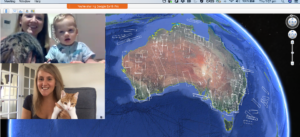Operating satellites from the kitchen table – April 2020
COVID-19 may be turning planet Earth upside down, but in outer-space, satellites are none the wiser. This means that NovaSAR-1 operations continue business as (almost) usual, with the addition of a few cats and 14-month old Calvin.
Daily planning and tasking of NovaSAR-1 images occurs via the mission planning interface that fortunately is accessible from just about anywhere with a CSIRO VPN connection. On average 3 – 4 images are planned and tasked each day using this platform. The success rate of image acquisitions increases each month, therefore, despite now being controlled from various spare-rooms and sofas around the world, the performance and usage of the satellite service continues to improve. We are now putting together the final touches ready to launch the service publicly for Australian users – good news for all those who suddenly find themselves with time to settle down and explore a brand-new dataset!
Our operations also involve ensuring CSIRO – and soon, all Australian – users of NovaSAR-1 are connected to key information and resources, including case studies, how-to guides, Analysis Ready Data formats and a public facing data hub.
Like many others around the world, we are having to rethink our planned face-to-face meetings and workshops this year. In the coming months we encourage you to look out for virtual opportunities to learn more about NovaSAR-1 data, science applications and outcomes via channels such as Earth Observation Australia. Who knows, perhaps we will end up reaching an even wider audience as people seek to learn something new whilst on lockdown!

One team member wasn’t so interested in discussing NovaSAR-1 acquisition coverage since January 2020…
